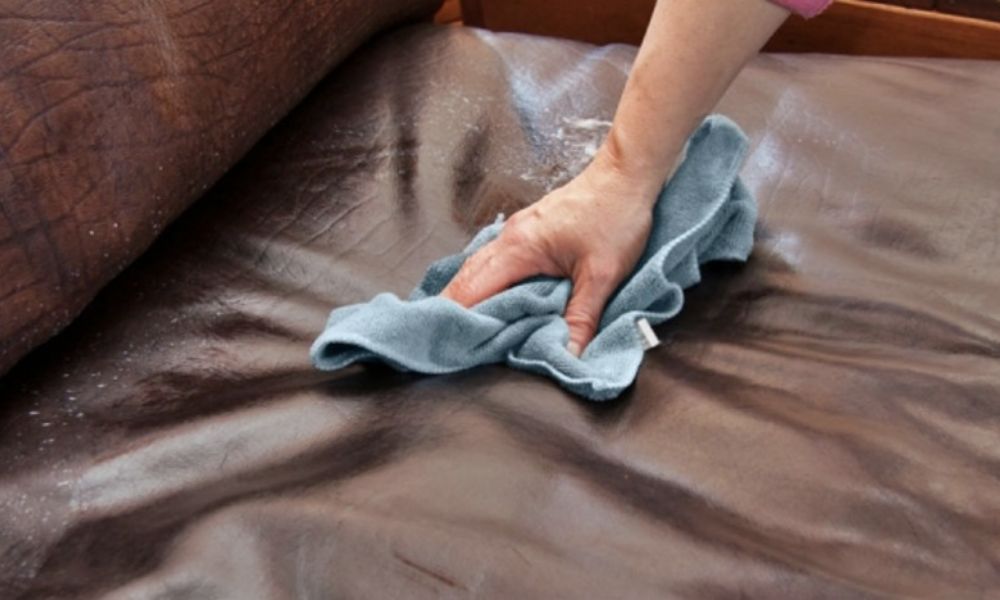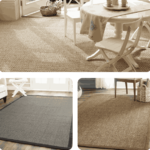A rectangular bedroom requires careful furniture arrangement that combines creativity and functionality. Layout affects more than just appearance; it affects how space is used and the atmosphere as a whole. This thorough guide provides a wealth of practical tips and creative ideas for designing the ideal furniture arrangement for rectangle bedrooms that strikes a balance between comfort and style.
Grasping the Room’s Blueprint
Room Dimensions Examination: The Foundation
Start by taking exact measurements of the size of your rectangle bedroom. Comprehending the dimensions and taking into consideration architectural elements like windows and doors creates a strong basis for strategically arranging furniture. Equipped with this knowledge, you may design a layout that optimizes space and enhances the room’s aesthetic appeal.
Focal Point Identification: Centralizing Focus
Determine the room’s focus elements, such as a striking window, an accent wall, or a standout piece of furniture. By acting as a guide for furniture placement, these focal points help to create a logical and aesthetically acceptable design.
Strategic Placement of Furniture
Bed Positioning: Establishing Dominance
In a bedroom, the bed usually occupies the main position. Putting it up against the longest wall is a traditional and space-efficient method. If you want to add some style to your headboard, make sure you leave enough room on each side for useful bedside tables.
Nightstands Symmetry: Aesthetic and Functional Balance
To create a sense of balance, place identical nightstands around the bed. This improves aesthetic appeal while also offering useful surfaces for necessities by the bed. Choose nightstands with storage if you want to keep your space tidy.
Dresser or Wardrobe: Utilizing Space Efficiently
Position a dresser or wardrobe along one of the shorter walls to optimize space. This addition improves the room’s overall balance in addition to providing storage. If there is room, think about adding a mirrored wardrobe to give the impression of additional space.
Zoning: Functional Spaces Creation
For larger rectangular bedrooms, create separate areas dedicated to different kinds of activities. Set aside a vanity space with a classy dressing table or a comfortable reading nook with a floor lamp. These areas improve both use and aesthetic appeal.
Harnessing Natural Light
Window Treatments: Ambient Enhancement
Select window coverings that let in plenty of natural light and blend in with the room’s rectangular design. Choose sheer, breezy curtains that will showcase the windows without taking over the room. Sheer materials retain brightness while adding elegance.
Mirrors for Light Reflection: Expanding Perceived Space
- Mirrors can be strategically positioned to reflect light and provide the impression of greater space. To reflect light across the room, think about installing a mirrored dresser or a full-length mirror on the back of the door.
- Mirrors have decorative as well as useful uses.
Creative Arrangement Concepts
Diagonal Furniture Placement: Dynamic Symmetry
Place important Leather furniture pieces diagonally to add energy. By straying from conventional rectangular lines, this design approach gives the room a feeling of movement and vitality. Try arranging a reading chair or the bed at an angle to provide a unique touch.
Floating Furniture: Airy Aesthetics
Consider “floating” important pieces like the bed or a sofa instead of shoving every piece of furniture up against the walls. This technique not only conveys a sense of spaciousness but also defines distinct pathways around the furniture, boosting the room’s movement.
Layered Rugs: Spatial Definition
Use layered rugs to distinguish between the bedroom’s several functional spaces. While smaller rugs can define a seating or dressing space, a huge rug beneath the bed anchors the sleeping area. This gives the floor area more visual interest and texture.
Color Harmony and Decor Integration
Color Palette Unity: Creating a Cohesive Atmosphere
Choose a color scheme that complements the rectangle design. While muted and dramatic colors together give depth and character, lighter tones can visually extend the area. If you want more visual interest, think about adding accent walls or subtle patterns.
Vertical Decor Elements: Emphasizing Height
Make use of vertical design features to accentuate the room’s height and draw the eye upward. Elevate the overall decor and add a sense of grandeur with floor-to-ceiling draperies, tall bookshelves, or vertical artworks.
Decorative Lighting: Atmosphere Enhancement
Incorporate fashionable lighting fixtures to improve the atmosphere of the bedroom. Think about adding stylish chandeliers, wall sconces, or pendant lights in thoughtful locations to provide both practical lighting and visual interest. One decorative element that unifies the space is lighting.
Ensuring Smooth Traffic Flow
Clear Pathways: Navigating with Ease
To allow for simple movement about the room, make sure there are clear paths between the furnishings. Make sure there is enough room around important furniture, such as the bed and nightstands, to avoid congestion. This improves usability and keeps things from feeling cluttered.
Doors and Windows Consideration: Practicality Matters
When placing furniture, consider where entrances and windows are located. Make sure windows are still accessible and doors can open freely. This sensible design not only improves the room’s use but also makes sure that everything flows smoothly.
Personalization and Final Flourishes
Personalized Decor: Reflecting Individual Style
Add a personal touch with décor pieces like plants, attractive pillows, or artwork. These components add to a warm and inviting ambiance in addition to reflecting your style. For a unique touch, think about adding a gallery wall or a statement piece above the bed.
Bedding and Textiles: Cozy Elegance
Select linens and fabrics that enhance the room’s overall design and comfort. The bedroom can be made into a comfortable haven with the addition of throws, attractive pillows, and soft, plush bedding. Try different textures and patterns to give the room a unique feel.
Conclusion
The process of arranging furniture in a rectangle bedroom is dynamic and calls for a careful balancing act between style and utility. Through comprehension of the room’s layout, thoughtful furniture placement, optimization of natural light, and integration of creative arrangement ideas, you may convert your bedroom into an elegant and cozy haven. To make the space truly yours, give careful thought to the color and décor selections, give traffic flow and accessibility first priority, and add finishing touches. Your rectangular bedroom furniture arrangement will be a tasteful fusion of comfort, design, and functionality if you follow these important tips.






